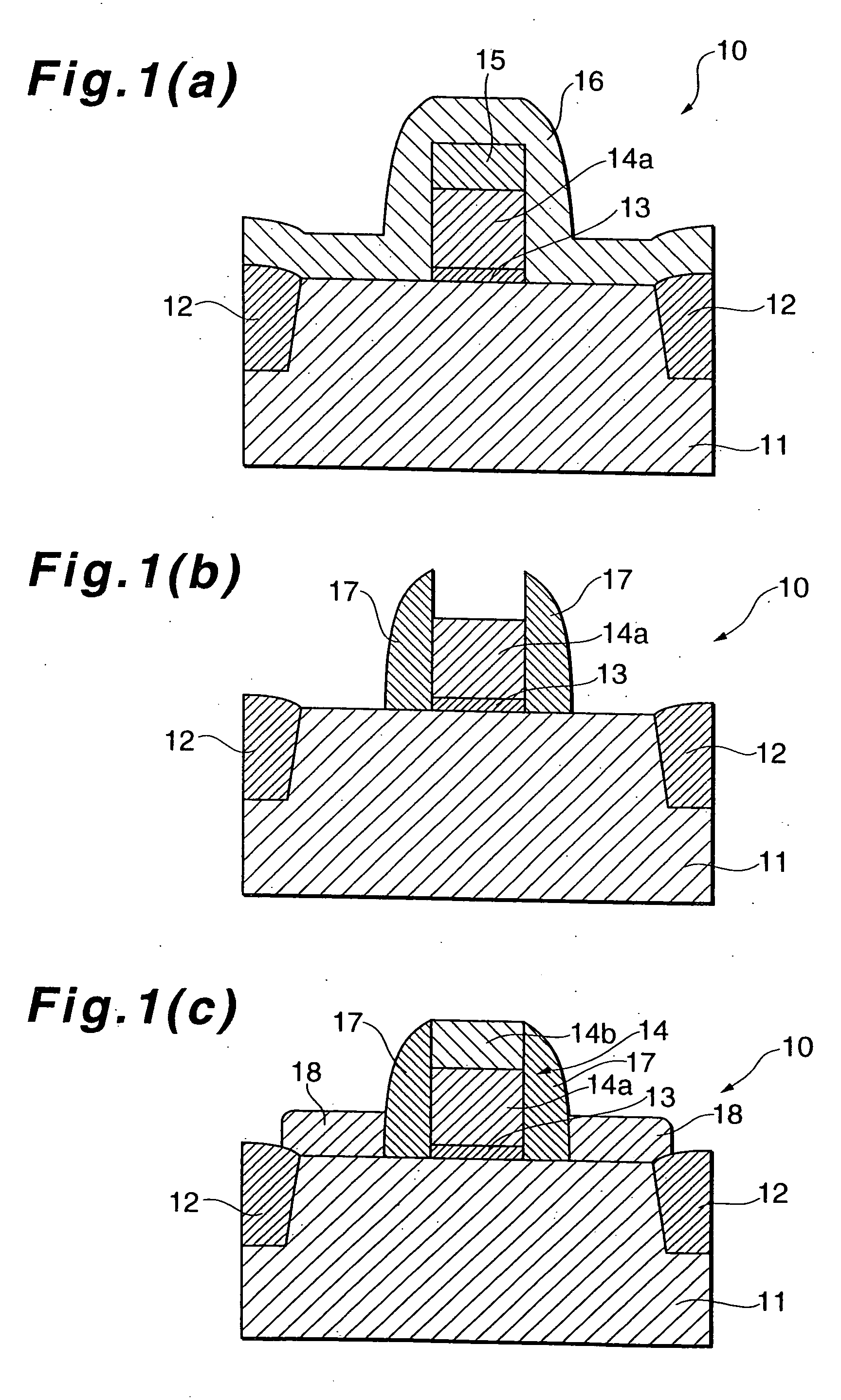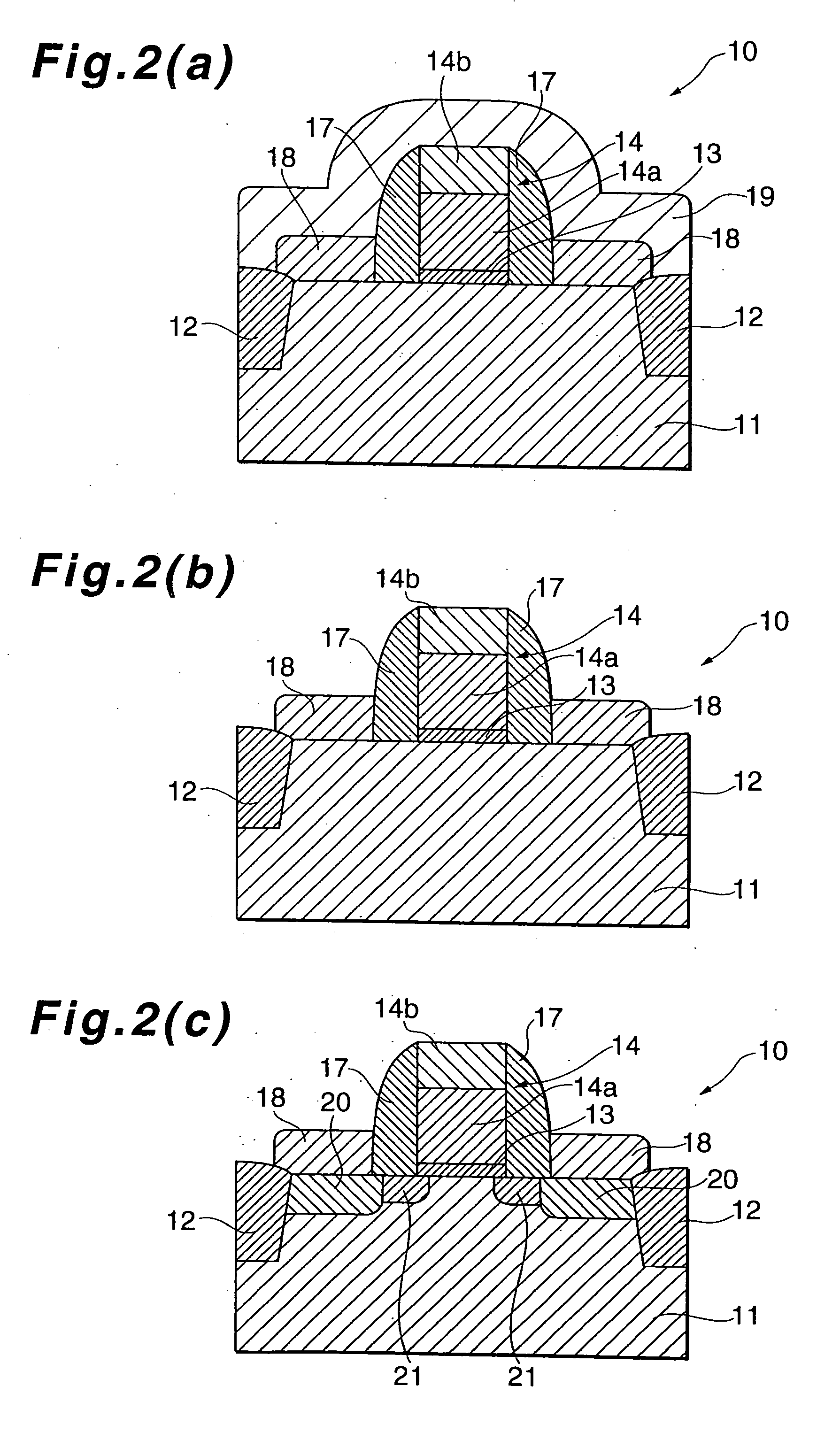Semiconductor device and manufacturing method of the same
- Summary
- Abstract
- Description
- Claims
- Application Information
AI Technical Summary
Benefits of technology
Problems solved by technology
Method used
Image
Examples
first embodiment
[0046]FIG. 1(a), (b) and (c) and FIG. 2(a), (b) and (c) are diagrams showing processes of manufacturing a semiconductor device 10 according to a first embodiment of the present invention. In FIG. 1(a), (b) and (c) and FIG. 2(a), (b) and (c) is shown a process of manufacturing an n-channel MOS FET using, for example, a p-type substrate.
[0047] As shown in FIG. 1(a), on a silicon semiconductor substrate exhibiting a p-type characteristic, as is well known, is formed a device separating region 12 to partition an active region for a semiconductor device. The device separating region 12 is formed by an STI (Shallow Trench Isolation) method.
[0048] On the active region partitioned by the device separating region 12 is formed a gate electrode 14 used for the MOS FET. The gate electrode 14 includes a gate electrode member 14a formed on the active region with a gate insulator 13 interposed therebetween. To form the gate electrode 14, as is well known, on the active region are sequentially st...
second embodiment
[0064] In the process of manufacturing a semiconductor device 10 of a second embodiment of the present invention, as shown in FIG. 3(a) to FIG. 3(d), after a pair of the source / drain electrode members 18 has been formed, a gate electrode 14 is formed.
[0065] As shown in FIG. 3(a), on a silicon semiconductor substrate 11 exhibiting a p-type characteristic is formed a device separating region 12 having the same structure as in the first embodiment. A silicon layer 22 with a thickness of 50 nm to be used as electrodes to be used for a source and a drain is formed on the active region partitioned by the device separating region 12. Then, a cobalt layer 19 is formed in a manner that it covers the device separating region 12 and the silicon layer 22. The cobalt layer 19 is formed by the well-known sputtering method so as to have the thickness of 50 nm. Moreover, to introduce an impurity into the cobalt layer, the n-type impurity such as phosphorous is implanted by the ion implantation met...
PUM
 Login to View More
Login to View More Abstract
Description
Claims
Application Information
 Login to View More
Login to View More - R&D
- Intellectual Property
- Life Sciences
- Materials
- Tech Scout
- Unparalleled Data Quality
- Higher Quality Content
- 60% Fewer Hallucinations
Browse by: Latest US Patents, China's latest patents, Technical Efficacy Thesaurus, Application Domain, Technology Topic, Popular Technical Reports.
© 2025 PatSnap. All rights reserved.Legal|Privacy policy|Modern Slavery Act Transparency Statement|Sitemap|About US| Contact US: help@patsnap.com



